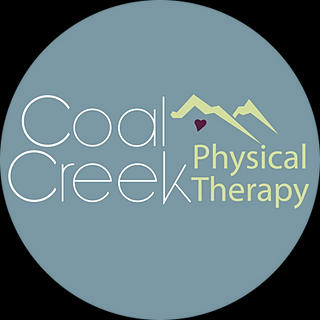How To Get The Most Out of Physical Therapy
- Coal Creek PT
- Apr 30, 2019
- 3 min read
1. Understand what's going on with your injury and your diagnosis.
Physical therapists are here to educate you about your body, injury, and journey to recovery. With that said, use us as a resource! If you don't understand exactly what your physical therapist is telling you, don't hesitate to pick our brains about what it is we're observing! This leads into my next point:
2. Ask questions!!
Ask questions throughout your entire time at Coal Creek Physical Therapy. If you're not sure about why you got injured, why you need physical therapy, why we are giving you certain exercises, how many repetitions and/or sets to complete, what activities are safe and/or unsafe to do during your recovery, just ask! We are here to help you. If we don't know the answer, we'll help you find it through evidence based research, asking our peers, or flipping through textbooks. If you think of questions between visits, write them down and bring them to your next appointment. We love treating patients who are just as interested and curious about their recovery as we are!
3. Journal your symptoms.
We will often ask you about your symptoms. More specifically, we're interested in what types of movements, activities, and/or positions flare you up. For example, if your low back pain starts shooting down your leg every time you sit down, let us know! This is useful information that your PT can use to design your exercise program and rehab. On the other hand, we'd also like to know what positions of movements make you feel better. Does the shooting leg pain stop or get better as soon as you stand up or if you place an ice pack on your low back? We'd love to know that information as well. Other things to journal: severity of symptoms using the scale of 0-10. (0 means no pain and 10 means emergency room pain), type of pain (shooting, throbbing, numbness, tingling, dull/achey), etc.
4. Attend your appointments.
During your initial evaluation, your PT will design a specific plan of care especially for you. Your plan of care is essentially the number of visits they think you'll need in order to achieve all your goals and recover. Each patients' plan of care will vary depending on the injury, diagnosis, if you had surgery, etc. Again, don't hesitate to ask your PT why you need that specific plan of care. We put a lot of thought into each patient's plan of care, based on previous patients, research, and outcomes we've achieved in the past. Since our PT's fill up quickly, it's always best to schedule all of your future appointments early on. This way, you have all the appointments you need in order to achieve your full plan of care. Of course, if you get sick or an emergency comes up, we'd be happy to assist you to reschedule to a day that works best for you. If you end up missing the appointment entirely, you run the risk of taking a step backwards in your progress.

5. Do your exercises
There is no doubt that your PT will send you home with exercises to do. The home exercise program you are sent home with is specifically picked and designed to address YOUR impairments, limitations, diagnosis, and goals. If you're unsure if you're performing your exercises correctly or wondering why exactly you were given each exercise, ASK US! We would love to tell you the exact muscle we want to target, whether it's to strengthen, lengthen, or improve motor control. There is a method to our madness, I promise!
6. Be honest with your physical therapist
Always, always be open and honest with your PT. We are here to provide you with our expert advice and can only help if you're honest with us. For example, if you've been given 12 exercises and only have time to complete 3 of them daily, let your PT know! They will redesign your home exercise program to include the most important exercises in order to make it more realistic for you. Other questions to consider: What are your goals? What do YOU want to achieve with your physical therapist? What's working well and what isn't?
7. Use the tools your PT taught you after you've been discharged.
Congratulations, you're graduating from Physical Therapy! Now what? Your PT has provided you with tools throughout your rehabilitation. Do not hesitate to use these as you move forward! For example, do your PT exercises 3x/week in order to maintain your strength and flexibility in order to PREVENT ever needing physical therapy for the SAME injury again!









Comments